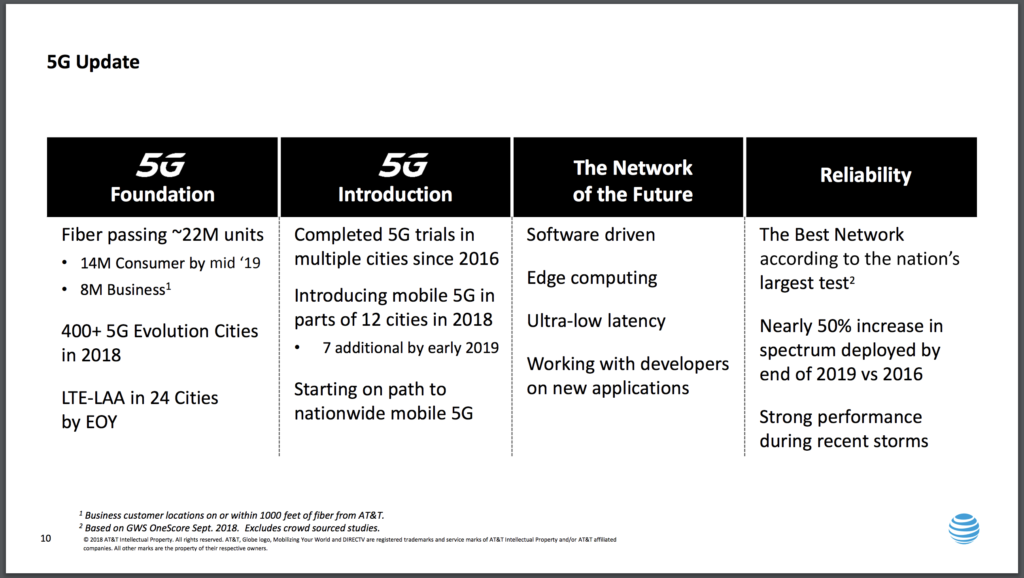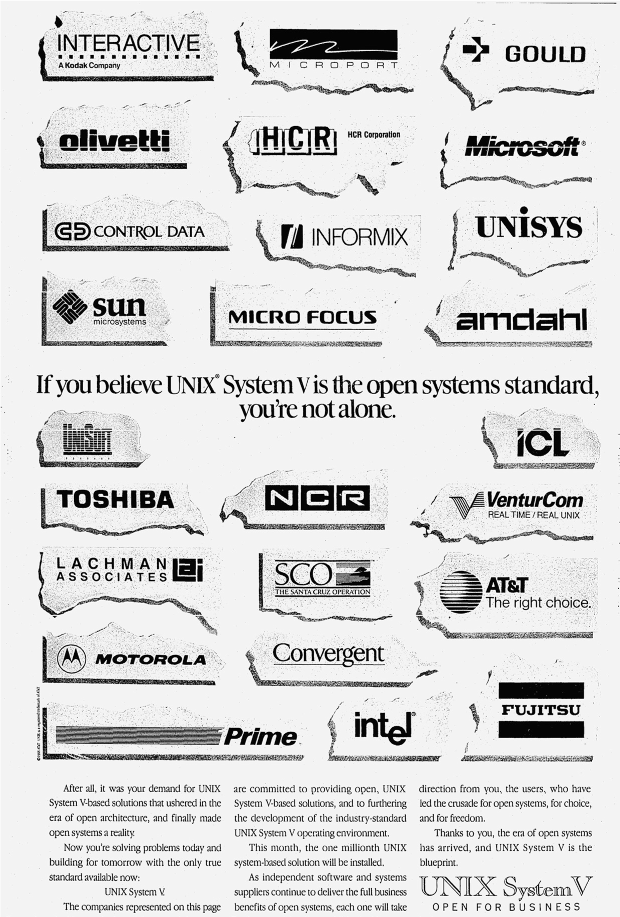Well, I guess the future is already here. I saw a headline today that announced 5G is even launching in Florida here too. For a couple years I’ve been reading about how 5G is going to transform connectivity and mobility as we know it, but I always felt it was somehow in the distant future. If you’ve not heard of 5G, it’s the next evolution of signal after 4G and LTE. But, it’s more than just a minor technology upgrade.
When 5G is fully implemented, it’s going to enable the underlying infrastructure we’ll need to build the smart cities, homes, autonomous vehicles, robotics, virtual and augmented reality systems everyone’s been designing and daydreaming about for the past decade. Think of it as one of the magic ingredients needed to bring the Internet of Things (IoT) market– with its estimated projected 21 billion devices– to life.
Today, I listened to the AT&T 3Q earnings call. Haven’t done that in years, and it was pretty interesting:
John Donovan, CEO of AT&T Communications said, “AT&T’s on track to be the first wireless carrier to introduce mobile 5G services in the United States in the next few weeks.”
He went on to explain that the company would introduce 5G in parts of 12 cities by the end of the year. He also talked about how “fiber is the backbone of 5G” and that “we have one of the nation’s largest fiber networks.”
On the business side, Donovan said the company plans “to be in more than 400 markets by the end of this year with nationwide coverage by mid-2019.” He reported customers are seeing a “dramatic lift in speed with theoretical peak speeds reaching 400 mbps.”
Well, all that sounds exciting, no? I think I will leave you with this dancing robot to anticipate the future now at your disposal.
Spot the robot dog dancing to UpTown Funk is simultaneously both terrifying and hilarious. pic.twitter.com/UNPsXZrXvh
— Gavin Sheridan (@gavinsblog) October 16, 2018



